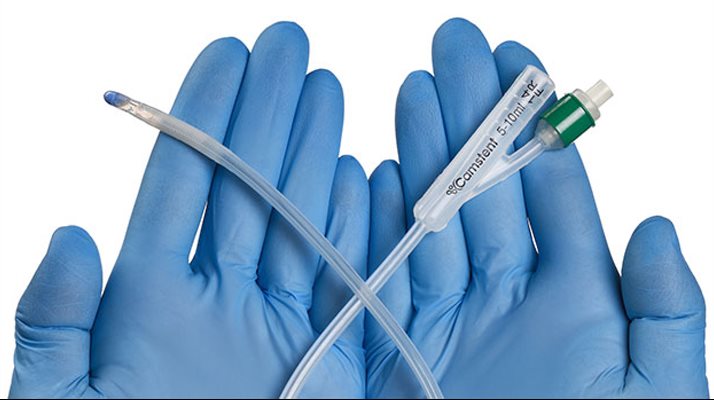Bacteria-resistant coatings to reduce infection

We have developed a patented class of materials which are resistant to bacterial attachment. Used as a medical device coating, the materials resist bacterial attachment, rather than killing the bacteria. This has the advantage that that biofilm colonisation is prevented, potentially preventing infection in patients, and that the coating should therefore not contribute to bacterial resistance.
Camstent urinary catheters
This technology, developed by Professor Morgan Alexander, Professor Derek Irvine and Professor Paul Williams, has been commercialised for urinary catheters in collaboration with Camstent. Urinary catheters represent one of the highest causes of hospital acquired infections, costing billions of pounds each year worldwide, and which can be extremely dangerous for patients.
This technology, developed by Professor Morgan Alexander, Professor Derek Irvine and Professor Paul Williams, has been commercialised for urinary catheters in collaboration with Camstent. Urinary catheters represent one of the highest causes of hospital acquired infections, costing billions of pounds each year worldwide, and which can be extremely dangerous for patients.
Technology updates
Discovery of a polymer resistant to bacterial biofilm, swarming, and encrustation JF Dubern et al, Science Advances Vol 9 Issue 4, January 2023
Predictive Molecular Design and Structure–Property Validation of Novel Terpene-Based, Sustainably Sourced Bacterial Biofilm-Resistant Materials, V Cuzzucoli Crucitti et al, Biomacromaterials, January 2023
A new bacterial resistant polymer catheter coating to reduce catheter associated urinary tract infection (CAUTI): A first-in-man pilot study, N.Jeffery, European Eurology Supplements, Vol 18, Issue 1, March 2019
Discovery of Novel Materials with Broad Resistance to Bacterial Attachment Using Combinatorial Polymer Microarrays. A. Hook et al, Advanced Materials. 2013, 25, 2542-2547.
Combinatorial discovery of polymers resistant to bacterial attachment A. Hook et al, Nature Bio-technology. Vol 30, No. 9, Sept 2012.
Other applications
We are now developing new polymers:
- With pro and anti inflammatory immune response
- To reduce infection rates for endotracheal tubes
- To reduce infection rates in external fixtures
- To reduce infection rates with venous catheters
Find out more about the EPSRC Biomaterials Discovery Programme
Lead experts
Recognition
Camstent's collaboration with the University of Nottingham was shortlisted for the Times Higher Education (THE) awards 2018 in the category "Most Innovative Contribution to Business-University Collaboration"
The technology was selected to feature in the Royal Society Summer Exhibition 2019
To license this technology
Licence and commercial collaboration or investment opportunities are available for this technology. Contact tto@nottingham.ac.uk
This work has been funded by Wellcome Trust and EPSRC